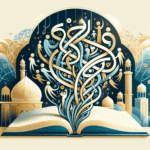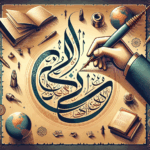The Arabic Alphabet in Modern Education Systems: Bridging Cultures and Knowledge
In our ever-evolving world, understanding different languages and scripts has become crucial for fostering cultural exchange and global collaboration. The Arabic alphabet, with its rich history and unique structure, plays a significant role in modern education systems across the globe. Let’s explore how this fascinating script is integrated into education today and why it matters. 🌍
Table of Contents
1. The Importance of the Arabic Alphabet
2. How Modern Education Systems Integrate the Arabic Alphabet
3. Benefits of Learning the Arabic Alphabet
4. Challenges in Teaching the Arabic Alphabet
5. Conclusion
6. Frequently Asked Questions
The Importance of the Arabic Alphabet
The Arabic alphabet is not just a series of letters; it’s a gateway to understanding a culture that has significantly influenced art, science, and literature. With over 420 million people speaking Arabic globally, it’s the fifth most spoken language in the world. 🌟 Integrating the Arabic script into education systems worldwide helps students appreciate diverse cultures and prepare for a globalized future.
How Modern Education Systems Integrate the Arabic Alphabet
Many countries have recognized the value of teaching the Arabic script in schools. Here’s how it’s being integrated:
1. Language Courses: Arabic language classes are increasingly offered in schools and universities, catering to both heritage learners and new students.
2. Cultural Programs: Schools host cultural events and workshops that include Arabic calligraphy and poetry, enriching students‘ understanding of the language and its culture.
3. Online Platforms: Digital resources and apps offer interactive ways to learn the Arabic alphabet, making it accessible and fun for students of all ages. 📱
Benefits of Learning the Arabic Alphabet
Learning the Arabic alphabet opens up a world of benefits:
✅ Cognitive Development: Learning a new script enhances brain function and improves cognitive skills.
✅ Cultural Awareness: Students gain a deeper understanding of Arabic-speaking cultures, promoting empathy and global citizenship.
✅ Career Opportunities: Proficiency in Arabic can open doors to careers in diplomacy, translation, international business, and more.
Challenges in Teaching the Arabic Alphabet
Despite its benefits, teaching the Arabic alphabet comes with challenges:
🔍 Complex Script: The Arabic script is cursive and context-sensitive, which can be daunting for beginners.
🔍 Lack of Resources: Some regions lack adequate teaching materials and trained educators to effectively teach Arabic.
🔍 Language Barrier: Non-Arabic speaking environments may find it challenging to integrate the script into the curriculum effectively.
Conclusion
Incorporating the Arabic alphabet into modern education systems is a step towards a more interconnected and culturally aware world. While challenges exist, the benefits far outweigh them, paving the way for a future where language is a bridge, not a barrier. 🌉
Frequently Asked Questions
Q: Why is the Arabic alphabet important in education?
A: It fosters cultural understanding and prepares students for global opportunities by connecting them to Arabic-speaking regions and cultures.
Q: What are some effective ways to learn the Arabic alphabet?
A: Enroll in language courses, use online learning platforms, and participate in cultural workshops that focus on Arabic language and script.
Q: What challenges do educators face when teaching Arabic?
A: Educators may struggle with the script’s complexity, lack of resources, and language barriers in non-Arabic speaking regions.
By embracing the Arabic alphabet in education, we not only preserve a rich cultural heritage but also build bridges to a more inclusive and understanding world. 🌈






